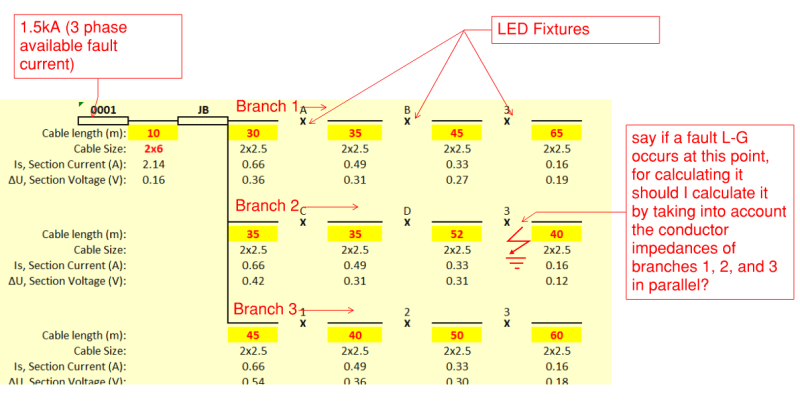The fault current path will be through the branch circuit conductor and returning by the equipment grounding conductor.
In Canada, for a 15 Amp circuit, you would use the length and impedance of a # 14 AWG conductor from the transformer to the point of the fault and an equal impedance of a #14 AWG returning equipment grounding conductor.
For a 20 Amp circuit, you would use the length and impedance of a # 12 AWG conductor from the transformer to the point of the fault and an equal impedance of a #14 AWG returning equipment grounding conductor.
Our code, the CEC, gives an impedance table from which the voltage drops may be extrapolated rather than using the DC resistance.
This assumes that the fault is to equipment grounded by an equipment grounding conductor.
I am not familiar with grounding methods at your location.
But, the ground return path impedance should be considered.
If the ground return path is through grounded structural metal, then that part of the impedance may be lower than an equipment grounding conductor, but the impedance of the hot conductor may be greater.
Magnetic encirclement separating the supply conductors from the ground return path must be avoided. Such an arrangement may raise the impedance of the ground path alarmingly.
--------------------
Ohm's law
Not just a good idea;
It's the LAW!


